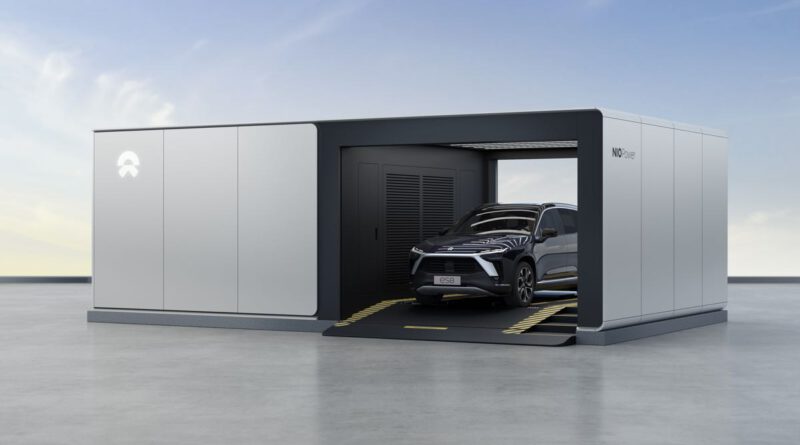Battery Swap for EVs: Hot or not?
The single most influential driving force for the EV revolution is the lightning-fast development of battery technology. We have come a long way over the past decade, and a lot has happened during that time. Battery costs have plummeted, charging times have improved, and batteries have become more efficient, leading to longer charge cycles and driving range. All things seem to be going in favor of EVs. But there is still one major issue hampering the widespread use of electric vehicles – slow charging times. Will battery swap solve that?
EV owners still have to wait twenty to thirty minutes to charge their automobiles when a conventional ICE car takes less than 5 minutes to refuel. It makes you wonder if EVs will be feasible in the future, especially when you consider fleet owners and taxi companies are adopting EVs at a rapid pace. Cab owners cannot waste time charging their vehicles since their productivity is proportional to spending the most time on the road. You can afford to charge your car at night and drive for a few days, but that doesn’t work if constant driving is the goal.
Batter swapping and it’s supporters
To work around this barrier, innovators have come up with a unique solution called battery swapping. Under the concept, EV drivers would visit a dedicated Battery Swapping Station (BSS) and replace their depleted battery with a freshly charged one. The whole process would take around 3 minutes.
The time spent swapping is incredibly close to the time you use for refueling, which is why this whole idea is an attractive proposition. Interestingly, the idea is not new, and it has been around for a while. The first instance of battery swapping can be traced back to Better Place, a startup founded by former SAP executive Shai Agassi. The charismatic founder mustered $900 million as an initial investment before the company went bankrupt in 2013.
Even with such a hefty investment, Better Place failed, and the idea of battery swapping died down. EVs weren’t popular back then, and battery technology wasn’t as advanced as it is today. But things have changed. Nowadays, more EVs are on the road than there were ten years ago, there are more players in the market, and most importantly, people are more willing to adapt to the change. As a result, the concept of battery swapping is being reincarnated.
In China, companies like Nio are making a difference. The country enjoys the boastful status of being the world’s largest automobile market and the largest EV market. Therefore, anything that works there must also work for the rest of the world. Nio has already swapped 2 million batteries in China, thanks to their 192 dedicated stations. They aim to expand even further and conquer the domestic market, with EV taxis in China increasing exponentially. By the end of 2021, the company aims to open at least 500 BSS in China. Other brands are also entering the Chinese market, which will help take the total number of BSS to 1,000.
Taking the idea forward and picking up where Better Place left off, Ample is looking to expand its portfolio in America. The battery swap startup has devised a system wherein users would be able to swap a portion of the whole battery allowing for more or less range as required. In essence, you could add or deduct battery range without changing the entire battery pack.
However, Ample’s future hopes will only see fruition if any OEMs are impressed with their plans. Nio makes its own EVs and has its own swapping stations. They have an entire ecosystem that allows them to succeed. However, Ample only provides swappable battery packs and battery swapping stations, so they depend on automobile manufacturers to adopt a standardized battery pack model.
Battery swapping will save time and alleviate range anxiety, but that will only happen if the proper infrastructure is in place. If every OEM designs its battery pack, swapping won’t work. You would have to visit an OEM-specific station to get a swap, which might not be feasible at all. Ample and other startups are looking at OEMs to adopt a similar hardware structure so that no matter which EV you drive, the battery design is standard. This way, you would be able to swap the battery at any station across the globe. Moreover, having a standardized battery pack will be more commercially viable for battery swapping startups and EV marques.
Will It Work?
Only time will tell if battery swapping is a viable alternative for the EV market. It didn’t work in the past, but the future looks promising. Nio is already enjoying great success in China with their swapping program, and they will launch the system in Europe very soon. Furthermore, Ample is in talks with five leading car manufacturers to push the concept of standardized battery packs even further. In Europe, a Swedish company called Powerswap is gearing up for the challenge as well.
It is only a matter of time before manufacturers like Tesla and Toyota join the march. When that happens, it may happen, that we will enter a new era in the EV revolution.
Also published on LinkedIn: https://www.linkedin.com/pulse/battery-swap-evs-hot-stefan-mueller




